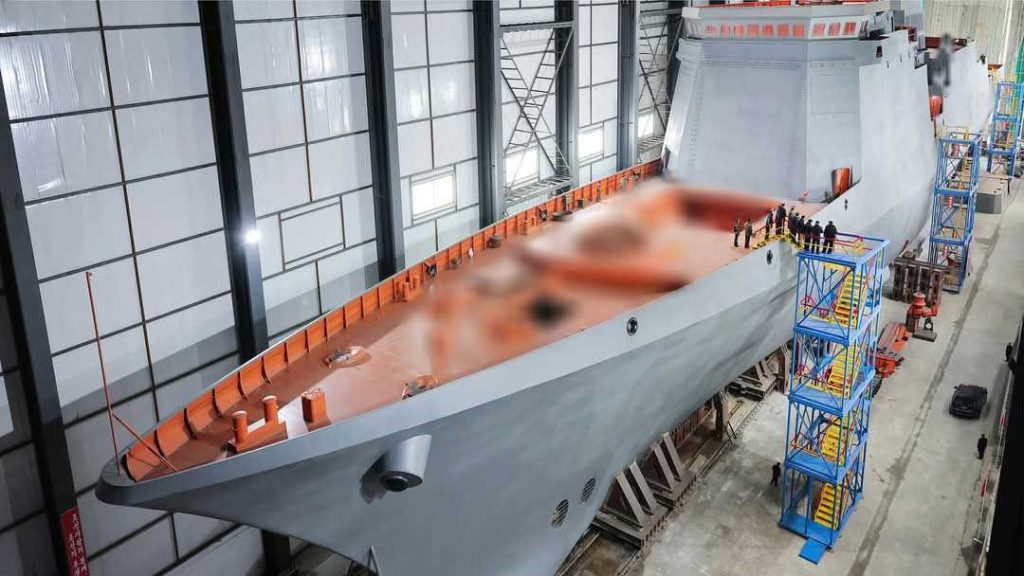A new warship is taking shape at North Korea’s Nampo naval base.
Others are reading now
A mysterious new North Korean warship, first detected under construction less than a year ago, has now emerged into clearer view.
Satellite imagery analyzed by 38 North and published April 9 shows the vessel in a floating dry dock at the country’s largest naval base in Nampo.
Measuring approximately 144 meters long and 15 meters wide, the ship appears to be the largest surface combatant North Korea has attempted to build in decades—nearly one-third wider than the country’s most modern corvettes, the Amnok and Nampo classes.
Originally spotted in May 2024, the vessel’s construction had been hidden inside a covered building with mesh roofing designed to obscure satellite surveillance.
Also read
Naval analyst H I Sutton, writing on X, pointed to visible design elements that hint at significant upgrades for the North Korean Navy.
These include a possible helicopter landing pad and hangar, phased array radar systems, and vertical launch systems (VLS) for cruise missiles—features found on more modern, globally competitive warships.
If confirmed, these upgrades would represent a major leap for a navy known mostly for small missile boats, outdated patrol vessels, and aging submarines.
38 North reports that the floating dry dock containing the warship has been repositioned multiple times along the quay since late March, a process believed to be part of the preparation for final outfitting and system integration.
Weapons Capabilities: What Might Be Onboard
While the ship’s full weapons loadout is still unknown, analysts believe its offensive capabilities could include:
- A main naval gun in the 57–100 mm range, possibly a copy of the Italian Oto Melara 76 mm Rapid.
- Anti-air artillery such as the Soviet-designed AK-230 or AK-360 systems, or local variants.
- The potential addition of vertical launch cells for the Hwasal-2 cruise missile, which has a reported range of up to 2,000 kilometers.
On existing North Korean warships like the Amnok class, these missiles are mounted in angled launchers. A vertical launch system would allow for greater firepower and faster missile deployment—an important evolution in strike capability.
So far, there’s no confirmation of surface-to-air missile systems, but portable systems and guns have filled that role on previous vessels.
The construction follows the recent unveiling of what appears to be North Korea’s first nuclear-powered ballistic missile submarine (SSBN).
That submarine, with a beam of around 12 meters, raised eyebrows due to its size—comparable to submarines fielded by major nuclear powers—and the possibility of foreign technological assistance, possibly from Russia or China.



